formerly eScholarship Editions


|
|
|
|
Your request for similar items found 20 book(s). | Modify Search | Displaying 1 - 20 of 20 book(s) | |
| 1. | 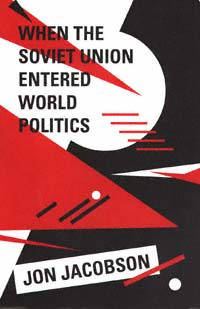 | Title: When the Soviet Union entered world politics Author: Jacobson, Jon 1938- Published: University of California Press, 1994 Subjects: History | Politics | European History | Russian and Eastern European Studies Publisher's Description: The dissolution of the Soviet Union has aroused much interest in the USSR's role in world politics during its 74-year history and in how the international relations of the twentieth century were shaped by the Soviet Union. Jon Jacobson examines Soviet foreign relations during the period from the end of the Civil War to the beginning of the first Five-Year Plan, focusing on the problems confronting the Bolsheviks as they sought to promote national security and economic development. He demonstrates the central importance of foreign relations to the political imagination of Soviet leaders, both in their plans for industrialization and in the struggle for supremacy among Lenin's successors.Jacobson adopts a post-Cold War interpretative stance, incorporating glasnost and perestroika-era revelations. He also considers Soviet relations with both Europe and Asia from a global perspective, integrating the two modes of early Soviet foreign relations - revolution and diplomacy - into a coherent discussion. Most significantly, he synthesizes the wealth of information that became available to scholars since the 1960s. The result is a stimulating work of international history that interfaces with the sophisticated existing body of scholarship on early Soviet history. [brief] Similar Items |
| 2. | 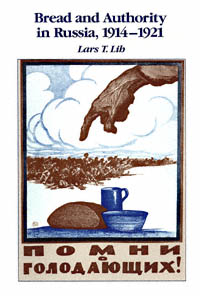 | Title: Bread and authority in Russia, 1914-1921 Author: Lih, Lars T Published: University of California Press, 1990 Subjects: History | European History | Politics | Russian and Eastern European Studies Publisher's Description: Between 1914 and 1921, Russia experienced a national crisis that destroyed the tsarist state and led to the establishment of the new Bolshevik order. During this period of war, revolution, and civil war, there was a food-supply crisis. Although Russia was one of the world's major grain exporters, the country was no longer capable of feeding its own people. The hunger of the urban workers increased the pace of revolutionary events in 1917 and 1918, and the food-supply policy during the civil war became the most detested symbol of the hardships imposed by the Bolsheviks.Focusing on this crisis, Lars Lih examines the fundamental process of political and social breakdown and reconstitution. He argues that this seven-year period is the key to understanding the Russian revolution and its aftermath. In 1921 the Bolsheviks rejected the food-supply policy established during the civil war; sixty-five years later, Mikhail Gorbachev made this change of policy a symbol of perestroika. Since then, more attention has been given both in the West and in the Soviet Union to the early years of the revolution as one source of the tragedies of Stalinist oppression.Lih's argument is based on a great variety of source material - archives, memoirs, novels, political rhetoric, pamphlets, and propoganda posters. His new study will be read with profit by all who are interested in the drama of the Russian revolution, the roots of both Stalinism and anti-Stalin reform, and more generally in a new way of understanding the effects of social and political breakdown. [brief] Similar Items |
| 3. | 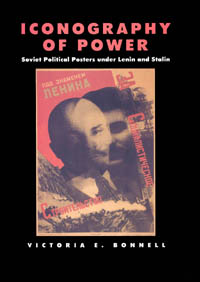 | Title: Iconography of power: Soviet political posters under Lenin and Stalin Author: Bonnell, Victoria E Published: University of California Press, 1998 Subjects: Sociology | Popular Culture | European Studies | Russian and Eastern European Studies | Politics | Art Criticism | History | European History Publisher's Description: Masters at visual propaganda, the Bolsheviks produced thousands of vivid and compelling posters after they seized power in October 1917. Intended for a semi-literate population that was accustomed to the rich visual legacy of the Russian autocracy and the Orthodox Church, political posters came to occupy a central place in the regime's effort to imprint itself on the hearts and minds of the people and to remold them into the new Soviet women and men. In this first sociological study of Soviet political posters, Victoria Bonnell analyzes the shifts that took place in the images, messages, styles, and functions of political art from 1917 to 1953. Everyone who lived in Russia after the October revolution had some familiarity with stock images of the male worker, the great communist leaders, the collective farm woman, the capitalist, and others. These were the new icons' standardized images that depicted Bolshevik heroes and their adversaries in accordance with a fixed pattern. Like other "invented traditions" of the modern age, iconographic images in propaganda art were relentlessly repeated, bringing together Bolshevik ideology and traditional mythologies of pre-Revolutionary Russia. Symbols and emblems featured in Soviet posters of the Civil War and the 1920s gave visual meaning to the Bolshevik worldview dominated by the concept of class. Beginning in the 1930s, visual propaganda became more prescriptive, providing models for the appearance, demeanor, and conduct of the new social types, both positive and negative. Political art also conveyed important messages about the sacred center of the regime which evolved during the 1930s from the celebration of the heroic proletariat to the deification of Stalin. Treating propaganda images as part of a particular visual language, Bonnell shows how people "read" them - relying on their habits of seeing and interpreting folk, religious, commercial, and political art (both before and after 1917) as well as the fine art traditions of Russia and the West. Drawing on monumental sculpture and holiday displays as well as posters, the study traces the way Soviet propaganda art shaped the mentality of the Russian people (the legacy is present even today) and was itself shaped by popular attitudes and assumptions. Iconography of Power includes posters dating from the final decades of the old regime to the death of Stalin, located by the author in Russian, American, and English libraries and archives. One hundred exceptionally striking posters are reproduced in the book, many of them never before published. Bonnell places these posters in a historical context and provides a provocative account of the evolution of the visual discourse on power in Soviet Russia. [brief] Similar Items |
| 4. | 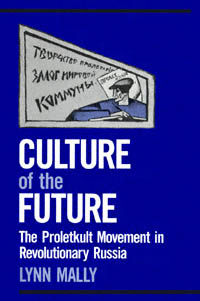 | Title: Culture of the future: the Proletkult movement in revolutionary Russia Author: Mally, Lynn Published: University of California Press, 1990 Subjects: Russian and Eastern European Studies | European History | Russian and Eastern European Studies Publisher's Description: Just days before the October 1917 Revolution, the Proletkult was formed in Petrograd to serve as an umbrella organization for numerous burgeoning working-class cultural groups. Advocates of the Proletkult hoped to devise new forms of art, education, and social relations that would express the spirit of the class that had come to power in the world's first successful proletarian revolution. Lynn Mally offers a detailed analysis of the Proletkult's cultural and political agenda. Drawing extensively on archival sources, she argues that the creation of a new culture proved as difficult and controversial as the creation of new notions of politics. From the outset, the Proletkult was divided by severe political and social tensions as members struggled to define the role of the organization and the cultural desires of the proletariat. What fused this divided movement was the shared belief that without radical cultural change the revolution would not succeed. The Proletkult's eventual decline graphically shows how political consolidation, institutional rivalries, and the devastating social consequences of the revolution and Civil War all worked together to limit the utopian potential of the October Revolution. [brief] Similar Items |
| 5. | 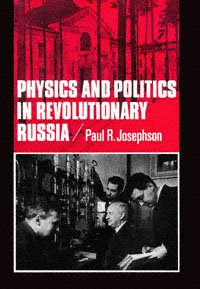 | Title: Physics and politics in revolutionary Russia Author: Josephson, Paul R Published: University of California Press, 1991 Subjects: History | History and Philosophy of Science | Russian and Eastern European Studies | Politics Publisher's Description: Aided by personal documents and institutional archives that were closed for decades, this book recounts the development of physics - or, more aptly, science under stress - in Soviet Russia up to World War II. Focusing on Leningrad, center of Soviet physics until the late 1930s, Josephson discusses the impact of scientific, cultural, and political revolution on physicists' research and professional aspirations.Political and social revolution in Russia threatened to confound the scientific revolution. Physicists eager to investigate new concepts of space, energy, light, and motion were forced to accommodate dialectical materialism and subordinate their interests to those of the state. They ultimately faced Stalinist purges and the shift of physics leadership to Moscow. This account of scientists cut off from their Western colleagues reveals a little-known part of the history of modern physics. [brief] Similar Items |
| 6. | 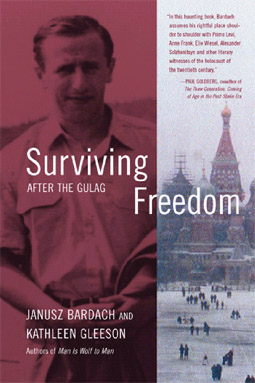 | Title: Surviving freedom: after the Gulag Author: Bardach, Janusz Published: University of California Press, 2003 Subjects: History | European Studies | Sociology | Politics | Russian and Eastern European Studies | Autobiography Publisher's Description: In 1941, as a Red Army soldier fighting the Nazis on the Belarussian front, Janusz Bardach was arrested, court-martialed, and sentenced to ten years of hard labor. Twenty-two years old, he had committed no crime. He was one of millions swept up in the reign of terror that Stalin perpetrated on his own people. In the critically acclaimed Man Is Wolf to Man, Bardach recounted his horrific experiences in the Kolyma labor camps in northeastern Siberia, the deadliest camps in Stalin's gulag system. In this sequel Bardach picks up the narrative in March 1946, when he was released. He traces his thousand-mile journey from the northeastern Siberian gold mines to Moscow in the period after the war, when the country was still in turmoil. He chronicles his reunion with his brother, a high-ranking diplomat in the Polish embassy in Moscow; his experiences as a medical student in the Stalinist Soviet Union; and his trip back to his hometown, where he confronts the shattering realization of the toll the war has taken, including the deaths of his wife, parents, and sister. In a trenchant exploration of loss, post-traumatic stress syndrome, and existential loneliness, Bardach plumbs his ordeal with honesty and compassion, affording a literary window into the soul of a Stalinist gulag survivor. Surviving Freedom is his moving account of how he rebuilt his life after tremendous hardship and personal loss. It is also a unique portrait of postwar Stalinist Moscow as seen through the eyes of a person who is both an insider and outsider. Bardach's journey from prisoner back to citizen and from labor camp to freedom is an inspiring tale of the universal human story of suffering and recovery. [brief] Similar Items |
| 7. | 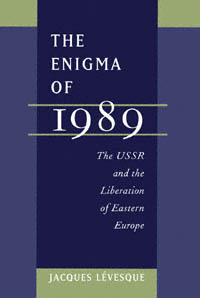 | Title: The enigma of 1989: the USSR and the liberation of Eastern Europe Author: Lévesque, Jacques Published: University of California Press, 1997 Subjects: Politics | History | European History | Russian and Eastern European Studies Publisher's Description: The Soviet external empire fell in 1989 virtually without bloodshed. The domino-like collapse of the communist regimes of Eastern Europe was not anticipated by political experts in either the East or the West. Most surprising of all was the Soviet Union's permissive reactions to the secession. For the first time in modern history, such an epochal upheaval could take place not only without war but also without major international tensions.This book is the first comprehensive scholarly attempt to elucidate Soviet behavior toward Eastern Europe in 1989. Jacques Lévesque thoroughly analyses the policies of the USSR toward Eastern Europe during the Gorbachev era and clarifies the goals that underpinned these policies.Based on interviews with political leaders and exhaustive research in Russia, Czechoslovakia, Hungary, Poland, and the other ex-Warsaw Pact countries, this book traces the nuances of each country's case as a set of continually changing, mutually reinforcing causes and effects. [brief] Similar Items |
| 8. | 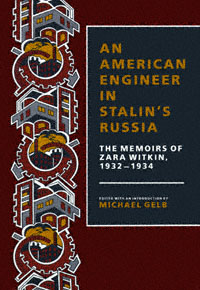 | Title: An American engineer in Stalin's Russia: the memoirs of Zara Witkin, 1932-1934 Author: Witkin, Zara 1900-1940 Published: University of California Press, 1991 Subjects: History | European History | Autobiography | Russian and Eastern European Studies Publisher's Description: In 1932 Zara Witkin, a prominent American engineer, set off for the Soviet Union with two goals: to help build a society more just and rational than the bankrupt capitalist system at home, and to seek out the beautiful film star Emma Tsesarskaia.His memoirs offer a detailed view of Stalin's bureaucracy - entrenched planners who snubbed new methods; construction bosses whose cover-ups led to terrible disasters; engineers who plagiarized Witkin's work; workers whose pride was defeated. Punctuating this document is the tale of Witkin's passion for Tsesarskaia and the record of his friendships with journalist Eugene Lyons, planner Ernst May, and others.Witkin felt beaten in the end by the lethargy and corruption choking the greatest social experiment in history, and by a pervasive evil - the suppression of human rights and dignity by a relentless dictatorship. Finally breaking his spirit was the dissolution of his romance with Emma, his "Dark Goddess."In his lively introduction, Michael Gelb provides the historical context of Witkin's experience, details of his personal life, and insights offered by Emma Tsesarskaia in an interview in 1989. [brief] Similar Items |
| 9. | 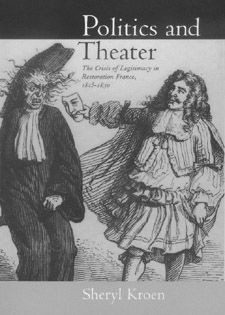 | Title: Politics and theater: the crisis of legitimacy in restoration France, 1815-1830 Author: Kroen, Sheryl 1961- Published: University of California Press, 2000 Subjects: History | European History | French Studies Publisher's Description: Moliére's anticlerical comedy Tartuffe is the unique prism through which Sheryl Kroen views postrevolutionary France in the years of the Restoration. Following the lead of the French men and women who turned to this play in the 1820s to make sense of their world, Kroen exposes the crisis of legitimacy defining the regime in these years and demonstrates how the people of the time made steps toward a democratic resolution to this crisis. Moving from the town squares, where state and ecclesiastical officials orchestrated their public spectacles in favor of the monarchy, to the theaters, where the French used Tartuffe to mock the restored monarch and the church, this cultural history of the Restoration offers a rich and colorful portrait of a period in which critical legacies of the revolutionary period were played out and cemented. While most historians have characterized the Restoration as a period of reaction and reversal, Kroen offers convincing evidence that the Restoration was a critical bridge between the emerging practices of the Old Regime, the Revolution, and the post-1830 politics of protest. She re-creates the atmosphere of Restoration France and at the same time brings major nineteenth-century themes into focus: memory and commemoration, public and private spheres, politics and religion, anticlericalism, and the formation of democratic ideologies and practices. [brief] Similar Items |
| 10. | 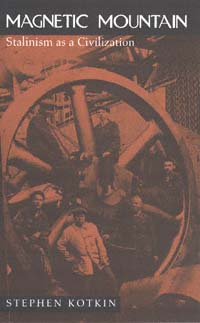 | Title: Magnetic mountain: Stalinism as a civilization Author: Kotkin, Stephen Published: University of California Press, 1997 Subjects: History | Russian and Eastern European Studies | European History Publisher's Description: This study is the first of its kind: a street-level inside account of what Stalinism meant to the masses of ordinary people who lived it. Stephen Kotkin was the first American in 45 years to be allowed into Magnitogorsk, a city built in response to Stalin's decision to transform the predominantly agricultural nation into a "country of metal." With unique access to previously untapped archives and interviews, Kotkin forges a vivid and compelling account of the impact of industrialization on a single urban community.Kotkin argues that Stalinism offered itself as an opportunity for enlightenment. The utopia it proffered, socialism, would be a new civilization based on the repudiation of capitalism. The extent to which the citizenry participated in this scheme and the relationship of the state's ambitions to the dreams of ordinary people form the substance of this fascinating story. Kotkin tells it deftly, with a remarkable understanding of the social and political system, as well as a keen instinct for the details of everyday life.Kotkin depicts a whole range of life: from the blast furnace workers who labored in the enormous iron and steel plant, to the families who struggled with the shortage of housing and services. Thematically organized and closely focused, Magnetic Mountain signals the beginning of a new stage in the writing of Soviet social history. [brief] Similar Items |
| 11. | 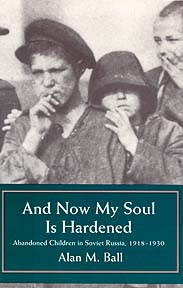 | Title: And now my soul is hardened: abandoned children in Soviet Russia, 1918-1930 Author: Ball, Alan M Published: University of California Press, 1994 Subjects: History | European History | Russian and Eastern European Studies Publisher's Description: Warfare, epidemics, and famine left millions of Soviet children homeless during the 1920s. Many became beggars, prostitutes, and thieves, and were denizens of both secluded underworld haunts and bustling train stations. Alan Ball's study of these abandoned children examines their lives and the strategies the government used to remove them from the streets lest they threaten plans to mold a new socialist generation. The "rehabilitation" of these youths and the results years later are an important lesson in Soviet history. [brief] Similar Items |
| 12. | 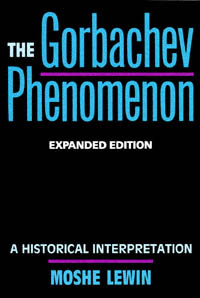 | Title: The Gorbachev phenomenon: a historical interpretation Author: Lewin, Moshe 1921- Published: University of California Press, 1991 Subjects: History | European History | Sociology | Politics | Russian and Eastern European Studies Publisher's Description: The "Gorbachev phenomenon" is seen as the product of complex developments during the last seventy years - developments that changed the Soviet Union from a primarily agrarian society into an urban, industrial one. Here, for the first time, a noted authority on Soviet society identifies the crucial h . . . [more] Similar Items |
| 13. | 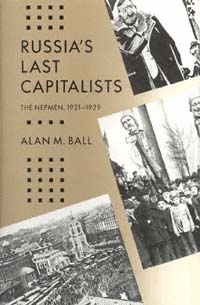 | Title: Russia's last capitalists: the Nepmen, 1921-1929 Author: Ball, Alan M Published: University of California Press, 1990 Subjects: History | European History | Russian and Eastern European Studies Publisher's Description: In 1921 Lenin surprised foreign observers and many in his own Party, by calling for the legalization of private trade and manufacturing. Within a matter of months, this New Economic Policy (NEP) spawned many thousands of private entrepreneurs, dubbed Nepmen. After delineating this political background, Alan Ball turns his attention to the Nepmen themselves, examining where they came from, how they fared in competition with the socialist sector of the economy, their importance in the Soviet economy, and the consequences of their "liquidation" at the end of the 1920s. Alan Ball's history of this experiment with capitalism is strikingly relevant to current efforts toward economic reform in the USSR. [brief] Similar Items |
| 14. | 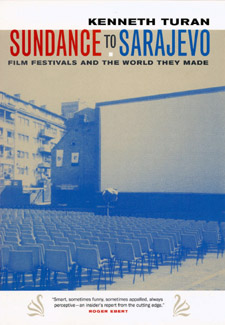 | Title: Sundance to Sarajevo: film festivals and the world they made Author: Turan, Kenneth Published: University of California Press, 2002 Subjects: Cinema and Performance Arts | Film Publisher's Description: Almost every day of the year a film festival takes place somewhere in the world--from sub-Saharan Africa to the Land of the Midnight Sun. Sundance to Sarajevo is a tour of the world's film festivals by an insider whose familiarity with the personalities, places, and culture surrounding the cinema makes him uniquely suited to his role. Kenneth Turan, film critic for the Los Angeles Times, writes about the most unusual as well as the most important film festivals, and the cities in which they occur, with an eye toward the larger picture. His lively narrative emphasizes the cultural, political, and sociological aspects of each event as well as the human stories that influence the various and telling ways the film world and the real world intersect. Of the festivals profiled in detail, Cannes and Sundance are obvious choices as the biggest, brashest, and most influential of the bunch. The others were selected for their ability to open a window onto a wider, more diverse world and cinema's place in it. Sometimes, as with Sarajevo and Havana, film is a vehicle for understanding the international political community's most vexing dilemmas. Sometimes, as with Burkina Faso's FESPACO and Pordenone's Giornate del Cinema Muto, it's a chance to examine the very nature of the cinematic experience. But always the stories in this book show us that film means more and touches deeper chords than anyone might have expected. No other book explores so many different festivals in such detail or provides a context beyond the merely cinematic. [brief] Similar Items |
| 15. | 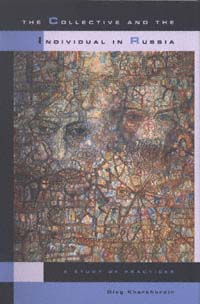 | Title: The collective and the individual in Russia: a study of practices Author: Kharkhordin, Oleg 1964- Published: University of California Press, 1999 Subjects: History | Social Theory | European History | Russian and Eastern European Studies | Intellectual History Publisher's Description: Oleg Kharkhordin has constructed a compelling, subtle, and complex genealogy of the Soviet individual that is as much about Michel Foucault as it is about Russia. Examining the period from the Russian Revolution to the fall of Gorbachev, Kharkhordin demonstrates that Party rituals - which forced each Communist to reflect intensely and repeatedly on his or her "self," an entirely novel experience for many of them - had their antecedents in the Orthodox Christian practices of doing penance in the public gaze. Individualization in Soviet Russia occurred through the intensification of these public penitential practices rather than the private confessional practices that are characteristic of Western Christianity. He also finds that objectification of the individual in Russia relied on practices of mutual surveillance among peers, rather than on the hierarchical surveillance of subordinates by superiors that characterized the West. The implications of this book expand well beyond its brilliant analysis of the connection between Bolshevism and Eastern Orthodoxy to shed light on many questions about the nature of Russian society and culture. [brief] Similar Items |
| 16. | 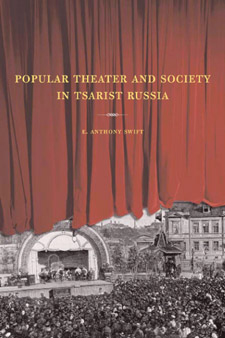 | Title: Popular theater and society in Tsarist Russia Author: Swift, Eugene Anthony Published: University of California Press, 2002 Subjects: History | European History | Russian and Eastern European Studies | Popular Culture | European Literature | European Studies Publisher's Description: This is the most comprehensive study available of the popular theater that developed during the last decades of tsarist Russia. Swift examines the origins and significance of the new "people's theaters" that were created for the lower classes in St. Petersburg and Moscow between 1861 and 1917. His extensively researched study, full of anecdotes from the theater world of the day, shows how these people's theaters became a major arena in which the cultural contests of late imperial Russia were played out and how they contributed to the emergence of an urban consumer culture during this period of rapid social and political change. Swift illuminates many aspects of the story of these popular theaters - the cultural politics and aesthetic ambitions of theater directors and actors, state censorship politics and their role in shaping the theatrical repertoire, and the theater as a vehicle for social and political reform. He looks at roots of the theaters, discusses specific theaters and performances, and explores in particular how popular audiences responded to the plays. [brief] Similar Items |
| 17. | 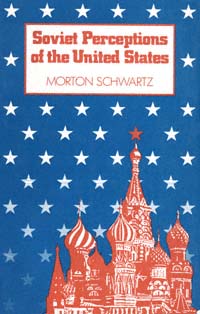 | Title: Soviet perceptions of the United States Author: Schwartz, Morton Published: University of California Press, 1980 Subjects: Politics Similar Items |
| 18. | 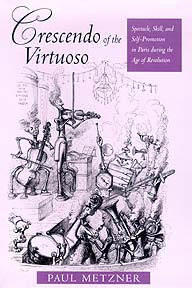 | Title: Crescendo of the virtuoso: spectacle, skill, and self-promotion in Paris during the Age of Revolution Author: Metzner, Paul 1952- Published: University of California Press, 1998 Subjects: History | European History | French Studies | European Studies Publisher's Description: During the Age of Revolution, Paris came alive with wildly popular virtuoso performances. Whether the performers were musicians or chefs, chess players or detectives, these virtuosos transformed their technical skills into dramatic spectacles, presenting the marvelous and the outré for spellbound audiences. Who these characters were, how they attained their fame, and why Paris became the focal point of their activities is the subject of Paul Metzner's absorbing study. Covering the years 1775 to 1850, Metzner describes the careers of a handful of virtuosos: chess masters who played several games at once; a chef who sculpted hundreds of four-foot-tall architectural fantasies in sugar; the first police detective, whose memoirs inspired the invention of the detective story; a violinist who played whole pieces on a single string. He examines these virtuosos as a group in the context of the society that was then the capital of Western civilization. [brief] Similar Items |
| 19. | 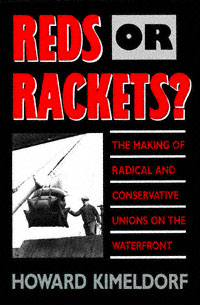 | Title: Reds or rackets?: the making of radical and conservative unions on the waterfront Author: Kimeldorf, Howard Published: University of California Press, 1988 Subjects: Sociology | United States History | Labor Studies Publisher's Description: Why is the American working class different? For generations, scholars and activists alike have wrestled with this question, with an eye to explaining why workers in the United States are not more like their radicalized European counterparts. Approaching the question from a different angle, Reds or Rackets? provides a fascinating examination of the American labor movement from the inside out, as it were, by analyzing the divergent sources of radicalism and conservatism within it. Kimeldorf focuses on the political contrast between East and West Coast longshoremen from World War I through the early years of the Cold War, when the difference between the two unions was greatest. He explores the politics of the West Coast union that developed into a hot bed of working class insurgency and contrasts it with the conservative and racket-ridden East Coast longshoreman's union. Two unions, based in the same industry - as different as night and day. The question posed by Kimeldorf is, why? Why "reds" on one coast and racketeers on the other?To answer this question Kimeldorf provides a systematic comparison of the two unions, illuminating the political consequences of occupational recruitment, industry structure, mobilization strategies, and industrial conflict during this period. In doing so, Reds orRackets? sheds new light on the structural and historical bases of radical and conservative unionism.More than a comparative study of two unions, Reds or Rackets? is an exploration of the dynamics of trade unionism, sources of membership loyalty, and neglected aspects of working class consciousness. It is an incisive and valuable study that will appeal to historians, social scientists, and anyone interested in understanding the political trajectory of twentieth-century American labor. [brief] Similar Items |
| 20. | 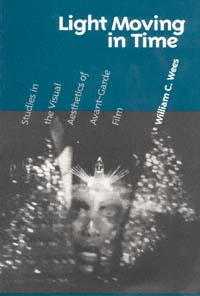 | Title: Light moving in time: studies in the visual aesthetics of avant-garde film Author: Wees, William C. (William Charles) 1935- Published: University of California Press, 1992 Subjects: Cinema and Performance Arts | Film Publisher's Description: To view a film is to see another's seeing mediated by the technology and techniques of the camera. By manipulating the cinematic apparatus in unorthodox ways, avant-garde filmmakers challenge the standardized versions of seeing perpetuated by the dominant film industry and generate ways of seeing that are truer to actual human vision.Beginning with the proposition that the images of cinema and vision derive from the same basic elements - light, movement, and time - Wees argues that cinematic apparatus and human visual apparatus have significant properties in common. For that reason they can be brought into a dynamic, creative relationship which the author calls the dialectic of eye and camera. The consequences of this relationship are what Wees explores.Although previous studies have recognized the visual bias of avant-garde film, this is the first to place the visual aesthetics of avant-garde film in a long-standing, multidisciplinary discourse on vision, visuality, and art. [brief] Similar Items |